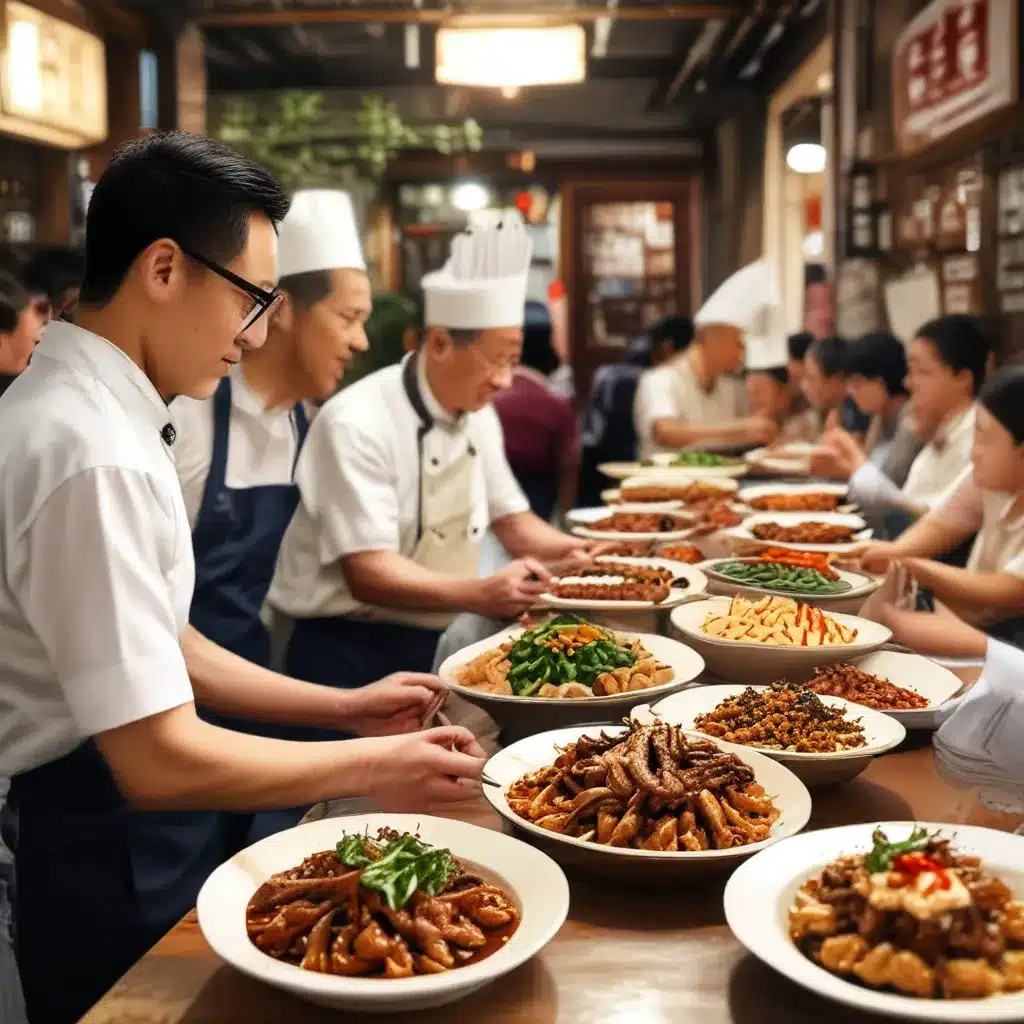
A Gastronomic Expedition through Time and Taste
As I stroll through the bustling streets of Shanghai, my senses are immediately captivated by the tantalizing aromas that waft through the air. The sizzle of woks, the fragrant steam of dumplings, and the alluring scent of soy sauce all come together in a symphony of flavors that tells the story of this vibrant city’s culinary heritage.
Culinary Backstreets has long been a go-to resource for anyone seeking to uncover the hidden gems of Shanghai’s food scene. Their deep dive into the city’s culinary roots has inspired me to embark on my own gastronomic odyssey, tracing the evolution of this dynamic cuisine and uncovering the rich tapestry of influences that have shaped it over the centuries.
From the Yangtze to the East China Sea
Shanghai’s location at the mouth of the Yangtze River has been a key factor in shaping its culinary identity. Centuries ago, this strategic position made it a hub for trade and cultural exchange, with merchants and travelers bringing diverse ingredients and cooking techniques from across China and beyond.
The city’s proximity to the East China Sea has also had a profound impact on its cuisine. Seafood, from succulent Shanghai hairy crabs to delicate local fish, has always been a cornerstone of the regional diet. In fact, the art of preparing and preserving seafood has been passed down through generations, with techniques like salting, drying, and pickling becoming integral to the local culinary canon.
A Melting Pot of Flavors
As Shanghai’s population grew and diversified over the centuries, the city’s culinary landscape evolved to reflect the influx of different cultural influences. The arrival of Cantonese, Sichuan, and Hunan migrants, for instance, introduced new spices, cooking methods, and flavor profiles that blended seamlessly with the existing Shanghainese traditions.
One of the most significant culinary influences on Shanghai’s cuisine has been the Jiangnan region, which encompasses the areas south of the Yangtze River. This area is renowned for its delicate, refined flavors and the use of high-quality seasonal ingredients. Dishes like Dongpo pork, a slow-braised pork belly delicacy, and xiaolongbao, the iconic soup dumplings, can trace their roots back to the Jiangnan culinary tradition.
The Rise of the Bund and the Changing Tastes of Shanghai
The late 19th and early 20th centuries marked a significant turning point in Shanghai’s culinary evolution. The city’s rapid industrialization and the influx of foreign settlers, particularly along the Bund, a waterfront promenade, introduced a wealth of new ingredients and cooking styles.
As the Bund transformed into a hub of international commerce and culture, Shanghai’s cuisine began to reflect the cosmopolitan nature of the city. Restaurants catering to the foreign elite incorporated Western techniques and ingredients, while also experimenting with fusion dishes that blended Chinese and international flavors.
This period also saw the rise of the “Shanghai style” of cooking, which emphasized bold, umami-rich flavors and the use of premium ingredients. Dishes like braised pork belly with tea leaves and stir-fried crab with scallions became hallmarks of this culinary revolution, cementing Shanghai’s reputation as a gastronomic powerhouse.
Embracing the Modern Era
In the contemporary era, Shanghai’s food scene has continued to evolve, with chefs and food entrepreneurs pushing the boundaries of traditional Shanghainese cuisine. The city has become a hotbed of culinary innovation, with a growing emphasis on sustainability, farm-to-table practices, and the celebration of local, seasonal produce.
Restaurants like the iconic One Dragon, for instance, have become trailblazers in the Shanghai food scene, showcasing the city’s culinary heritage while incorporating modern sensibilities and global influences. Their commitment to sourcing high-quality, locally grown ingredients and their innovative approach to traditional Shanghainese dishes have earned them a loyal following among discerning diners.
Uncovering the Diverse Flavors of Shanghai
As I dive deeper into the rich culinary tapestry of Shanghai, I’m consistently struck by the sheer diversity and complexity of the city’s cuisine. From the delicate, umami-forward flavors of Jiangnan-style cooking to the bold, spice-infused dishes of Sichuan influence, there’s always something new to discover.
One of my recent culinary adventures took me to a hole-in-the-wall dumpling joint tucked away in a bustling alley. The moment I sank my teeth into the delicate wrapper of a xiaolongbao, the burst of savory broth and tender pork filling transported me back in time, reminding me of the rich history and tradition that underpins Shanghai’s food culture.
Embracing the Future of Shanghai’s Cuisine
As I reflect on my gastronomic journey through Shanghai, I can’t help but feel a deep sense of excitement for the future of the city’s culinary landscape. With a new generation of chefs and food innovators pushing the boundaries of traditional techniques and flavors, the possibilities for Shanghai’s cuisine are truly limitless.
Whether it’s the emergence of sustainable, farm-to-table initiatives or the fusion of global influences with local traditions, one thing is clear: Shanghai’s culinary odyssey is far from over. As I plan my next visit to One Dragon Restaurant, I eagerly await the opportunity to uncover the next chapter in this ever-evolving story of Shanghai’s rich and dynamic food culture.






